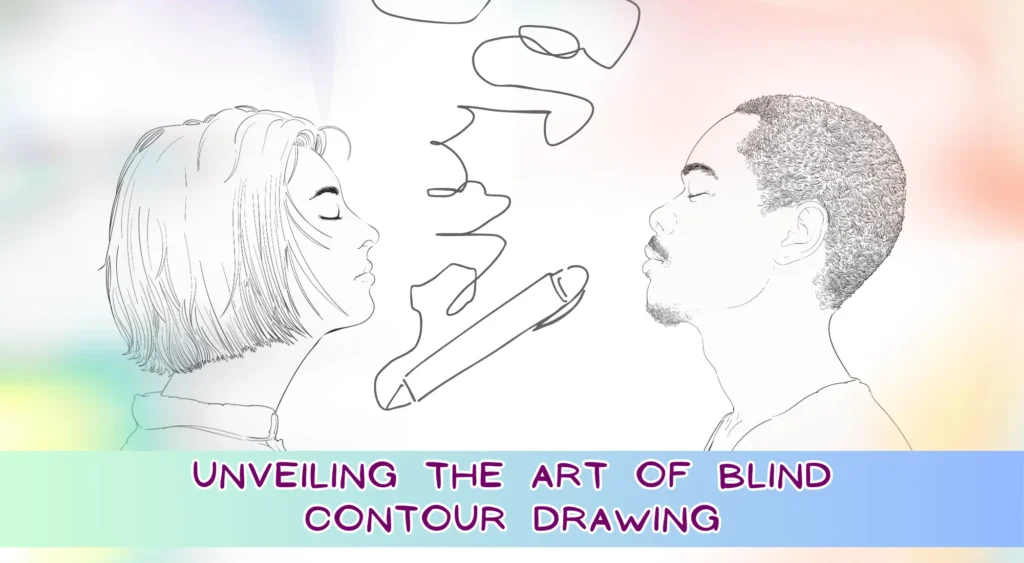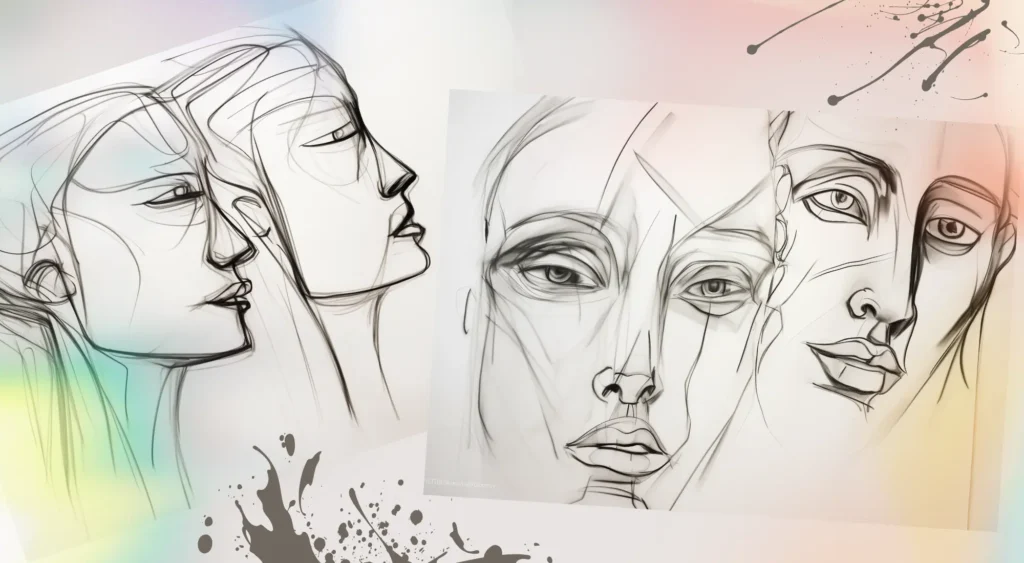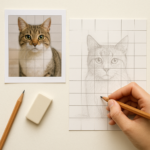Blind contour drawing stands as a captivating artistic approach that defies traditional drawing techniques. It pushes artists to rely on touch and perception rather than sight, forging a deeper bond with their subject. Discover how to master this enthralling form of art.
Table of Contents

1. Grasping the Essence of Blind Contour Drawing
At the heart of blind contour drawing lies the practice of tracing the subject’s edges with a continuous, unguided line. This technique is a subset of contour line drawing, where the primary focus is capturing an object’s outer silhouette without lifting the pen from the paper.
2. Fundamentals of Contour Line Art
Grasping the basics of contour line art is essential before delving into the blind contour method. This technique is about outlining your subject, accentuating its structure and form. Typical contour line drawing examples include everyday items like fruits or personal items.
3. Advantages of the Blind Contour Technique
Engaging in blind contour drawing enriches your artistic skills in numerous ways. It sharpens your sense of observation, enhances hand-eye coordination, and promotes a more contemplative approach to creating art, often leading to unexpected and striking outcomes.

4. Initiating Your Blind Contour Journey
Choose an uncomplicated object to start. Find a comfortable spot and position the object where it’s easily visible. Begin outlining the object on your paper, resisting the temptation to peek at your artwork. Allow your hand to follow your gaze, tracing the object’s shape.
5. Experimenting with Various Subjects and Styles
Once you’ve gotten the hang of basic blind contour drawing, venture into drawing more intricate objects. Experiment with modified contour drawing, occasionally glancing at your paper, or try continuous line contour drawings for a different challenge.
6. Blending Blind Contour Drawing into Regular Practice
Incorporate blind contour drawing into your regular art practice as a warm-up exercise. It helps loosen up your hand and calms your mind, setting the stage for more focused work. This technique can also serve as a relaxing, meditative artistic activity.
7. Evaluating and Sharing Your Creations
Reflect on your blind contour drawings once completed. Often, these drawings reveal an expressive and unique portrayal of the subject. Share your creations with others and discuss the experience and insights gained from drawing without sight.
8. Enhancing Your Artistic Abilities through Blind Contour
Regular practice of blind contour drawing will refine your overall drawing skills. Your line work will grow in confidence, and your ability to distill the essence of a subject will improve. Embrace this journey and enjoy the exploration and growth it brings.
Conclusion
Blind contour drawing is an enriching and distinctive art exercise that challenges and redefines traditional drawing techniques. It offers a fresh perspective on observing and depicting the world, making it a valuable practice for artists of all levels. This method not only fosters artistic skill development but also encourages creativity and personal expression.




